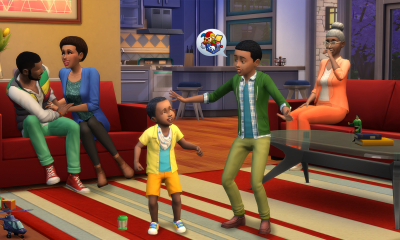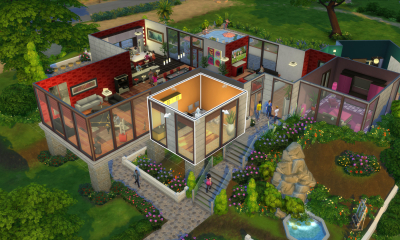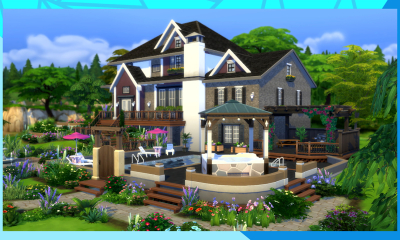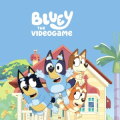The Sims™ 4
The Sims Saga Continues with Its Fourth Installment
The environment of simulation gaming was forever changed when the original Sims game was launched in 2000. The series has since gone on to introduce several iterations, the latest being The Sims 4. Despite the fanfare that typically accompanies any new release in the franchise, this title received some mixed reviews upon its unveiling in 2014 - particularly when compared to its compelling predecessors.
The Crucial Component: Gameplay Deep-Dive
Fans of The Sims franchise are drawn in by the freedom it presents, and the gameplay is an essential element in making the game experience wholly engrossing. In this regard, The Sims 4 appears to take a few steps backward.
The Sims 4 features worlds that are remarkably smaller in scale, accommodating around 20 lots, a downgrade from the 70-100 lots available in The Sims 3. This reduction in size gives seasoned players a sense of restriction in how much they can explore or build in the game's environment. Notably absent is the open-world concept, which was a highlight in the previous iteration, The Sims 3.
The fixed camera angles clamp down one's ability to fully immerse themselves in the gameplay. The unmovable camera in The Sims 4 feels limiting, making you feel as though you're stuck in a static space, which is the opposite of the dynamic virtual environment that The Sims fans yearn for. Moreover, the inability to transfer houses from one lot to another furthers this feeling of confinement and restriction, undermining the creative freedom that has been a cornerstone of the franchise.
While it is possible to travel between neighborhoods, this feature is a double-edged sword. The accompanying loading screen draws from The Sims 2, bringing with it a nostalgic feel for long-term fans; however, it also interrupts the fluidity of the gameplay, acting as a disruptive break in the continuity of the game.
In terms of life stages, it's disheartening that the toddler life stage was removed from The Sims 4. Although this might not be an issue for all players, it does detract from the life simulation aspect of the game. The beauty of The Sims series lies in its depiction of the stages of human life, and cutting out one of these stages diminishes the realism and, therefore, the overall appeal of the game.
In a nutshell, while The Sims 4 does introduce some new elements into the gameplay, the missing features and scale restriction limit the space for creativity, subtly taking away from the expansive universe that The Sims is highly appreciated for.
Graphical Depiction: A Detailed Examination
One aspect that can frequently make or shatter a video game’s success is its visual appeal. Generally, fans anticipate a certain standard of visual excellence, particularly in new releases from iconic franchises. The Sims 4 safeguards a sense of visual continuity with its predecessors; however, it potentially missed an opportunity for truly dazzling upgrades.
In direct comparison, it is tough to spot significant differences in The Sims 4 graphic's quality when placed side-by-side with The Sims 3. Arguably, certain elements, like the texture of the grass and water, seem to have undergone a simplification process rather than an upgrade. These elements were skillfully textured in Sims 3, giving off a sense of lush, almost realistic vibrance, while in The Sims 4, they might strike the player as noticeably plain by comparison. This choice might have been intentional to align with aesthetic direction, but it can potentially disappoint some who were anticipating a visual treat.
Another visual aspect representing a step backward is the 'Create a Style' feature from The Sims 3, which permits users to apply custom colors to objects making for a more personalized and immersive experience. This feature was done away with in The Sims 4, and users need to make do with a predefined list of colors as was the case in the older Sims 2, indicating a rollback in terms of customizable scope.
However, the changes are not all negative. The Sims 4 graphics do support all 16:9 resolutions up to 2560×1440 (QHD), which is a considerable improvement from The Sims 3's support limit of 1600×1200.
In conclusion, while the graphics of The Sims 4 might not be a major step up from The Sims 3, they certainly retain their charm, keeping in line with the visual aesthetic that has enthralled generations of players. Enhancements in resolution support indicate an increased focus on technical modernity, a factor that might well shape the future graphical decisions in this long-standing franchise.
Conclusion: The Tale of The Sims 4
Whether you are a fan of the series or a new gamer curious about The Sims 4, it comes with its highs and lows. While the life simulation has seen improvement, the lack of features from previous installments and unimpressive graphics may be a letdown for diehard Sims followers, especially those who expect progress with each new installment.
Pros
- Life simulation is improved
- Easier to construct houses with the revised build mode
- Support for 16:9 resolutions up to 2560×1440 (QHD).
Cons
- Reduced world size with no open concept
- Missing features: owned cars or garages, workplace, and emergency services.
To download the app, you will get links to the Official Website and/or official digital markets.


































